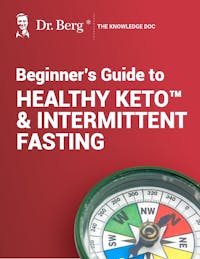Plantar Fasciitis and Heel Spurs: The Biggest Mistake

Complete Oxalate Foods List
Discover the potential health risks of high oxalate intake
Find out if you benefit from avoiding oxalate-rich foods
Learn practical strategies for adopting and maintaining a low-oxalate diet
Get a comprehensive list of foods categorized by their oxalate content
Receive practical tips for reducing oxalate levels in your diet

Complete Oxalate Foods List
Discover the potential health risks of high oxalate intake
Find out if you benefit from avoiding oxalate-rich foods
Learn practical strategies for adopting and maintaining a low-oxalate diet
Get a comprehensive list of foods categorized by their oxalate content
Receive practical tips for reducing oxalate levels in your diet

Complete Oxalate Foods List
Discover the potential health risks of high oxalate intake
Find out if you benefit from avoiding oxalate-rich foods
Learn practical strategies for adopting and maintaining a low-oxalate diet
Get a comprehensive list of foods categorized by their oxalate content
Receive practical tips for reducing oxalate levels in your diet

Complete Oxalate Foods List
Discover the potential health risks of high oxalate intake
Find out if you benefit from avoiding oxalate-rich foods
Learn practical strategies for adopting and maintaining a low-oxalate diet
Get a comprehensive list of foods categorized by their oxalate content
Receive practical tips for reducing oxalate levels in your diet

Complete Oxalate Foods List
Discover the potential health risks of high oxalate intake
Find out if you benefit from avoiding oxalate-rich foods
Learn practical strategies for adopting and maintaining a low-oxalate diet
Get a comprehensive list of foods categorized by their oxalate content
Receive practical tips for reducing oxalate levels in your diet

Complete Oxalate Foods List
Discover the potential health risks of high oxalate intake
Find out if you benefit from avoiding oxalate-rich foods
Learn practical strategies for adopting and maintaining a low-oxalate diet
Get a comprehensive list of foods categorized by their oxalate content
Receive practical tips for reducing oxalate levels in your diet

Complete Oxalate Foods List
Discover the potential health risks of high oxalate intake
Find out if you benefit from avoiding oxalate-rich foods
Learn practical strategies for adopting and maintaining a low-oxalate diet
Get a comprehensive list of foods categorized by their oxalate content
Receive practical tips for reducing oxalate levels in your diet

Complete Oxalate Foods List
Discover the potential health risks of high oxalate intake
Find out if you benefit from avoiding oxalate-rich foods
Learn practical strategies for adopting and maintaining a low-oxalate diet
Get a comprehensive list of foods categorized by their oxalate content
Receive practical tips for reducing oxalate levels in your diet

Complete Oxalate Foods List
Discover the potential health risks of high oxalate intake
Find out if you benefit from avoiding oxalate-rich foods
Learn practical strategies for adopting and maintaining a low-oxalate diet
Get a comprehensive list of foods categorized by their oxalate content
Receive practical tips for reducing oxalate levels in your diet

Complete Oxalate Foods List
Discover the potential health risks of high oxalate intake
Find out if you benefit from avoiding oxalate-rich foods
Learn practical strategies for adopting and maintaining a low-oxalate diet
Get a comprehensive list of foods categorized by their oxalate content
Receive practical tips for reducing oxalate levels in your diet

Beginner’s Guide to Healthy Keto & Intermittent Fasting
Receive a step-by-step guide to starting Healthy Keto® and intermittent fasting
Learn about foundational principles and best practices for beginners
Get detailed visual guidance on portion sizes and meal composition
Discover how to set achievable goals and monitor your progress
Find practical tips for overcoming common challenges and staying motivated

Beginner’s Guide to Healthy Keto & Intermittent Fasting
Receive a step-by-step guide to starting Healthy Keto® and intermittent fasting
Learn about foundational principles and best practices for beginners
Get detailed visual guidance on portion sizes and meal composition
Discover how to set achievable goals and monitor your progress
Find practical tips for overcoming common challenges and staying motivated

Beginner’s Guide to Healthy Keto & Intermittent Fasting
Receive a step-by-step guide to starting Healthy Keto® and intermittent fasting
Learn about foundational principles and best practices for beginners
Get detailed visual guidance on portion sizes and meal composition
Discover how to set achievable goals and monitor your progress
Find practical tips for overcoming common challenges and staying motivated

Beginner’s Guide to Healthy Keto & Intermittent Fasting
Receive a step-by-step guide to starting Healthy Keto® and intermittent fasting
Learn about foundational principles and best practices for beginners
Get detailed visual guidance on portion sizes and meal composition
Discover how to set achievable goals and monitor your progress
Find practical tips for overcoming common challenges and staying motivated

Beginner’s Guide to Healthy Keto & Intermittent Fasting
Receive a step-by-step guide to starting Healthy Keto® and intermittent fasting
Learn about foundational principles and best practices for beginners
Get detailed visual guidance on portion sizes and meal composition
Discover how to set achievable goals and monitor your progress
Find practical tips for overcoming common challenges and staying motivated

Beginner’s Guide to Healthy Keto & Intermittent Fasting
Receive a step-by-step guide to starting Healthy Keto® and intermittent fasting
Learn about foundational principles and best practices for beginners
Get detailed visual guidance on portion sizes and meal composition
Discover how to set achievable goals and monitor your progress
Find practical tips for overcoming common challenges and staying motivated

Beginner’s Guide to Healthy Keto & Intermittent Fasting
Receive a step-by-step guide to starting Healthy Keto® and intermittent fasting
Learn about foundational principles and best practices for beginners
Get detailed visual guidance on portion sizes and meal composition
Discover how to set achievable goals and monitor your progress
Find practical tips for overcoming common challenges and staying motivated

Beginner’s Guide to Healthy Keto & Intermittent Fasting
Receive a step-by-step guide to starting Healthy Keto® and intermittent fasting
Learn about foundational principles and best practices for beginners
Get detailed visual guidance on portion sizes and meal composition
Discover how to set achievable goals and monitor your progress
Find practical tips for overcoming common challenges and staying motivated

Beginner’s Guide to Healthy Keto & Intermittent Fasting
Receive a step-by-step guide to starting Healthy Keto® and intermittent fasting
Learn about foundational principles and best practices for beginners
Get detailed visual guidance on portion sizes and meal composition
Discover how to set achievable goals and monitor your progress
Find practical tips for overcoming common challenges and staying motivated

Beginner’s Guide to Healthy Keto & Intermittent Fasting
Receive a step-by-step guide to starting Healthy Keto® and intermittent fasting
Learn about foundational principles and best practices for beginners
Get detailed visual guidance on portion sizes and meal composition
Discover how to set achievable goals and monitor your progress
Find practical tips for overcoming common challenges and staying motivated
Plantar fasciitis is a common foot ailment that can turn a simple morning walk to the bathroom into an agonizing journey.
Learn about what causes plantar fasciitis, common symptoms, and steps you can take to avoid this ailment while supporting your overall health.
The Causes and Symptoms of Plantar Fasciitis
The leading cause of plantar fasciitis is strain injury, causing micro-tears to the ligament as it attaches to the heel bone or other areas of tightness on its path across the bottom of the foot.
A sudden increase in weight-bearing activities like running can trigger symptoms, but so too can less strenuous actions if repeated enough times without proper rest.
Interestingly, some individuals may be more prone to developing this condition due to lifestyle habits or physiological characteristics such as flat feet or high arches.
The typical symptom for those suffering from plantar fasciitis is intense stabbing pain near their heels, usually after a long rest.
Role Of The Plantar Fascia In Foot Pain
The plantar fascia acts like a bowstring that supports our arch's curve and absorbs shock when we walk.
If tension becomes too great on it through excessive pressure exerted during physical activity, small tears may occur within these tissues, leading them towards inflammation, thus triggering symptoms explicitly associated with 'fasciitis' (inflammation).
Microtrauma in Plantar Fasciitis
Imagine your foot as an intricate web, with the plantar fascia acting like the sturdy center strand that holds everything together. Think about walking on this web for miles daily; eventually, tiny tears or 'microtraumas' start forming.
This exactly happens within our feet when we overuse them without proper care or support. These micro-tears cause inflammation and lead to the intense heel pain associated with plantar fasciitis.
Research shows that prolonged standing, wearing improper footwear, and obesity can contribute to increasing microtrauma risk.
Oxalates and Foot Pain
Moving onto diet, have you ever thought spinach could be causing your foot pain? As strange as it may sound, foods high in oxalates, such as spinach, almonds, parsley, chocolate, peanuts, and kiwi, might fuel your discomfort.
Oxalates are naturally occurring compounds found abundantly across many food groups but aren't always our friends. In excess amounts, they can form sharp oxalate crystals, like tiny shards of glass that irritate tissues and cause pain.
Those pesky crystal build-ups? They're not just tough on your kidneys, but they can also cause foot pain. But don't rush to cut out all high-oxalate foods. There's no need to remove them from your diet altogether.
Instead, try balancing them with calcium-rich foods, because these substances bind with oxalates in the intestines, preventing their absorption.
Misconceptions About Heel Spurs and Stretching Techniques
Many folks believe heel spurs are the primary culprit behind foot pain.
While heel spurs often appear on X-rays of people with plantar fasciitis, they are not directly causing your agony.
In reality, the problem is caused by inflamed connective tissue (plantar fascia) at the bottom of your foot.
Imagine it like an overstretched rubber band – pull too hard, and you get tiny micro tears leading to inflammation and pain. Those tears are aggravated when you stretch incorrectly or overdo certain activities.
The Correct Stretching Technique for Plantar Fasciitis
To ease foot pain, most people would instinctively choose to stretch by reaching down towards their toes to elongate calf muscles.
This isn’t necessarily bad, but there’s a better way to stretch. Instead, practice stretches that will target the muscles on top of your feet along with shin muscles.
By focusing on these muscles rather than your calf, you are more likely to alleviate pain associated with plantar fasciitis.
Alleviating Plantar Fasciitis Through Dietary Adjustments
The food we eat has a direct impact on our health and well-being, including the management of conditions like plantar fasciitis. By making certain dietary modifications, it is possible to alleviate the symptoms of plantar fasciitis.
Avoiding Oxalate-Rich Foods
Oxalates are naturally occurring substances in many foods that our bodies need to break down properly. When they aren't processed effectively, they form crystals, which may irritate tissues and cause pain.
If you're dealing with foot discomfort due to plantar fasciitis, minimizing your intake of high-oxalate foods might be beneficial. Examples include spinach, almonds, parsley, dark chocolate, peanuts, and kiwi - all known for their high levels of this substance.

Incorporating Calcium in Your Diet
Eating calcium-rich foods or taking supplements while consuming meals containing oxalates can help reduce irritation caused by these compounds.
Research shows calcium binds with oxalates in the digestive tract before reaching your kidneys or other areas, which could lead to crystal formation.
This is because once bound together, they're excreted from your body via urine rather than deposited as irritating crystals within tissues.
Maintaining an Alkaline Body State
Acidic bodily environments provide ideal conditions for uric acid deposition as painful crystals—a factor linked with gout and foot pain resulting from conditions such as plantar fasciitis.
Maintaining an alkalized state through diet modifications can play a crucial role in preventing this.
Chow down on green leafy veggies and other non-starchy ones to help alkalize your body. You could also try potassium citrate supplements; they're great for neutralizing acid in your system.
Research shows a diet rich in vegetables does wonders.
If you're looking to lower your uric acid levels naturally and reduce the risk of foot pain, there are a few strategies you can try:
Stay hydrated: Drinking plenty of water helps flush out excess uric acid from your body.
Eat a nutritious diet: Avoid foods high in purines, such as red meat, organic meats, and seafood. Instead, choose foods with low purine content, such as vegetables, and low-fat dairy products.
Limit alcohol consumption: Alcohol can increase uric acid levels, so it's best to drink in moderation or avoid it altogether.
Maintain a healthy weight: Excess weight puts extra pressure on your joints, increasing the risk of foot pain.
Manage stress: Stress can trigger inflammation and worsen foot pain. Find healthy ways to manage stress, such as exercise or hobbies.
Wear supportive shoes: Choose shoes with proper arch support and cushioning to reduce strain on your feet.
Stretch and strengthen: Regular stretching and strengthening exercises for your feet and calves can help improve flexibility and reduce the risk of foot pain.
Incorporating these self-care tips into your daily routine can help lower uric acid levels and potentially reduce the risk of foot pain associated with gout and arthritis.
Plantar Fasciitis Healing Period
If you're dealing with the pain and discomfort of plantar fasciitis, you might wonder how to cure plantar fasciitis in one week. While there are no guarantees, there are certain steps you can take to speed up your recovery process.
Treatment Strategies for Plantar Fasciitis
The first thing that comes into mind is rest. Reducing or even stopping activities that hurt your foot will help relieve the pressure on your heel. Another beneficial treatment strategy includes stretching exercises.
Stretching helps alleviate the pain and strengthens the muscles supporting your arch, preventing future injuries.
It would be best to consider wearing shoes with good support and cushioning or using shoe inserts to evenly distribute pressure across your feet.

Nutrition's Role in Healing Plantar Fasciitis
Beyond these measures, it's also essential to pay attention to nutrition. Certain foods have been shown to reduce inflammation - a necessary part of healing from plantar fasciitis.
These include fatty fish rich in omega-3s, berries full of antioxidants, and green leafy vegetables packed with vitamins A and K.
A Holistic Approach to Healing
While these strategies may help speed your recovery, healing from plantar fasciitis usually takes time. It's not unusual for symptoms to last several months with treatment.
However, a holistic approach—combining rest and physical therapy exercises with proper nutrition and footwear—can undoubtedly make you feel better faster.
Always consult a healthcare professional before starting any new treatment or diet plan. They can provide personalized advice based on your condition and overall health status.
Conclusion
While plantar fasciitis can be debilitating, a thorough grasp of its causes and symptoms empowers individuals to take proactive measures.
By making dietary adjustments, practicing proper foot care, and seeking appropriate treatment, the discomfort associated with plantar fasciitis can be effectively managed.
Ultimately, this approach promotes improved overall well-being and foot health, enabling individuals to lead more comfortable and active lives.
Previous blog
Best Remedies for RheumatoidNext blog
Why Your Fat Determines Your Vitamin DTags

Popular
08/21/2024
46.8K views
05/22/2024
41.1K views
11/18/2024
243.6K views
03/18/2024
11/21/2022




